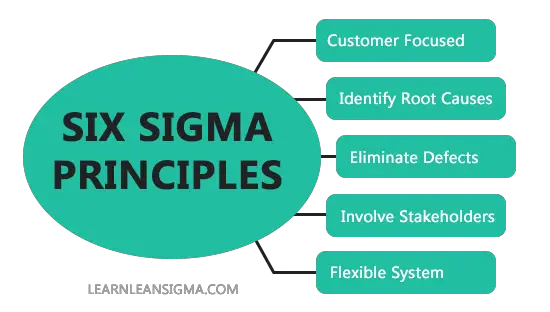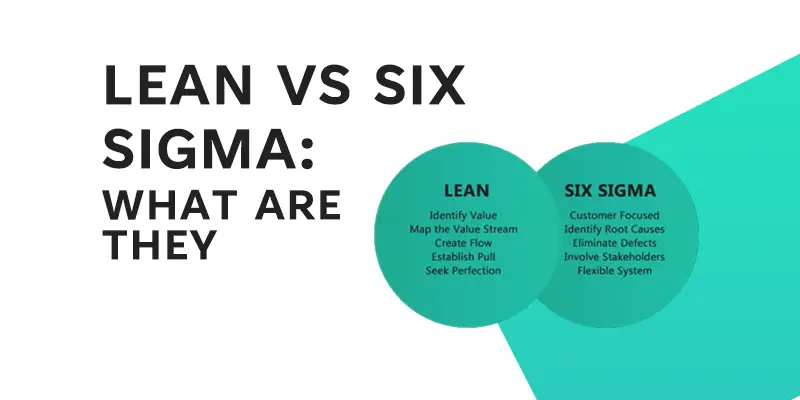Introduction
In the realm of manufacturing efficiency and quality enhancement, two methodologies stand out: Lean Manufacturing and Six Sigma. As businesses aim to bolster their operational efficiency and product quality, they often grapple with the decision of which methodology to adopt. This post serves as a guide, offering insights into the intricacies of each method and the benefits they bring.
Lean Manufacturing
Definition and Key Principles of Lean
Lean Manufacturing is a systematic approach designed to minimize waste in manufacturing systems while simultaneously ensuring maximum productivity. Originating from the Toyota Production System, Lean focuses on delivering value to the customer and continuously improving processes. Its key principles revolve around:

- Identifying value from the customer’s perspective.
- Mapping the value stream and eliminating waste.
- Ensuring a smooth flow of processes.
- Adopting a pull system where production is based on actual demand.
- Pursuing perfection through continuous improvement.
How Lean is Used to Reduce Waste and Increase Efficiency in Manufacturing
Lean targets seven types of wastes (often remembered by the acronym TIMWOOD):
- Transport – Moving products unnecessarily.
- Inventory – Excessive stock and work in progress.
- Motion – Unnecessary movements by employees.
- Waiting – Waiting for the next step in a process.
- Overproduction – Producing more than needed.
- Over-processing – Doing more than is required by the customer.
- Defects – Products or services that are out of specification.
By identifying and eliminating these wastes, companies can enhance their operational efficiency and reduce costs.

Examples of Companies That Have Successfully Implemented Lean
- Toyota: The pioneer of Lean Manufacturing, Toyota has drastically reduced waste, improved efficiency, and maintained high product quality.
- Boeing: The aerospace giant has employed Lean principles to streamline its production processes and reduce lead times.
Six Sigma
Definition and Key Principles of Six Sigma
Six Sigma is a data-driven methodology that seeks to eliminate defects in any process. The term “Six Sigma” refers to the statistical representation of only 3.4 defects per million opportunities. Its approach involves:

- Defining the problem and setting the objective.
- Measuring the current process and gathering data.
- Analyzing data to find the root cause of defects.
- Improving the process based on the analysis.
- Controlling and maintaining the improved process.
How Six Sigma is Used to Improve Quality and Reduce Defects in Manufacturing
By using statistical tools and techniques, Six Sigma pinpoints variations in processes and strives to reduce them. This ensures a higher quality of output, leading to increased customer satisfaction and reduced costs associated with defects and rework.
Examples of Companies That Have Successfully Implemented Six Sigma
- General Electric (GE): Under the leadership of Jack Welch, GE saved billions by implementing Six Sigma throughout its operations.
- Motorola: The birthplace of Six Sigma, Motorola dramatically improved its product quality and operational efficiency.
Comparative Analysis
While Lean emphasizes waste reduction and process efficiency, Six Sigma focuses on reducing defects through statistical analysis. Both methodologies can complement each other. For instance, while Lean might streamline a process, Six Sigma can ensure the modified process produces quality output consistently.
Certain industries might lean more towards one methodology over the other. High-precision industries like aerospace might prefer Six Sigma, while industries with a broader focus on overall efficiency might adopt Lean.
Implementing Both Lean and Six Sigma
Combining Lean’s focus on process flow and waste reduction with Six Sigma’s emphasis on quality through statistical analysis can yield powerful results. This hybrid approach is often termed “Lean Six Sigma.”

Steps and Considerations for Implementing Both Methods in a Business
- Assessment: Understand the current operational landscape and identify areas of improvement.
- Training: Equip employees with the necessary skills through training sessions.
- Implementation: Begin with pilot projects, then scale.
- Review: Continuously monitor and adjust processes.
Examples of Companies That Have Successfully Implemented Both Lean and Six Sigma
- 3M: By integrating both methodologies, 3M has seen improved operational efficiency and product quality.
- Amazon: The e-commerce behemoth employs a hybrid approach to streamline its vast supply chain and ensure quality service.
Conclusion
Lean Manufacturing and Six Sigma, each powerful in its own right, can offer businesses unparalleled advantages when understood and implemented correctly. Whether adopted individually or in tandem, their principles can lead to heightened efficiency, quality, and customer satisfaction. As industries evolve, the significance of these methodologies only grows. We encourage businesses to explore, understand, and harness the potential of Lean
References
- Smith, B., 2003. Lean and Six Sigma–a one-two punch. Quality progress, 36(4), p.37.
- Näslund, D., 2013. Lean and six sigma–critical success factors revisited. International Journal of Quality and Service Sciences, 5(1), pp.86-100.








